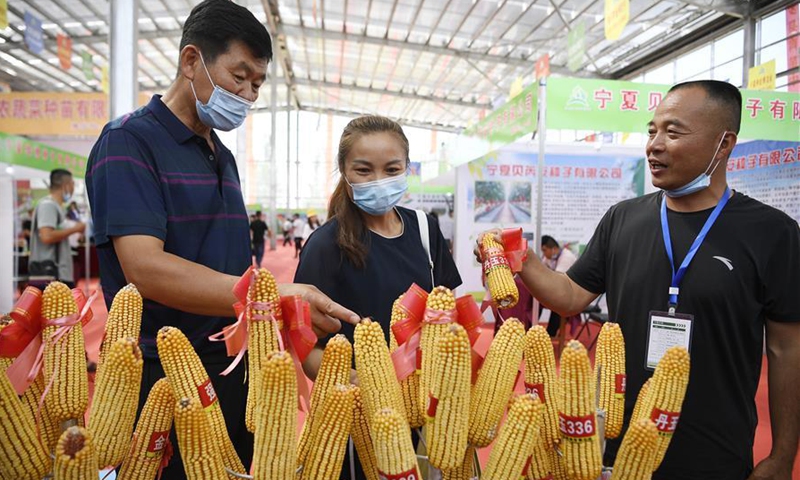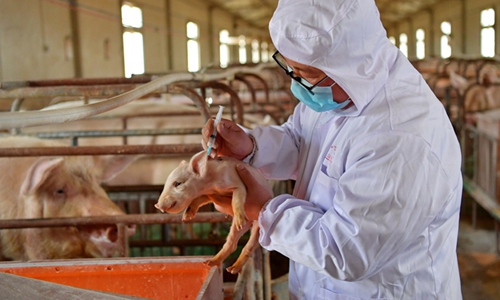
Participants learn about corn seed products during the 7th Ningxia Seeds Expo held at Pingluo County of Shizuishan City, northwest China's Ningxia Hui Autonomous Region, July 27, 2020. (Xinhua/Wang Peng)
A seed resource bank built by the Chinese Academy of Agricultural Sciences is expected to be put into use in 2021, as the country vowed to reinforce its agricultural seed breeding sector, said a member of the Chinese People's Political Consultative Conference (CPPCC) on Thursday in response to how to revive the nation's seed industry.
The bank would reserve 1.5 million seeds, ranking first in the world, as part of the overall effort to ensure self-sufficiency for seeds, which lie at the heart of the food security, said Wan Jianmin, a CPPCC member and vice president of the Chinese Academy of Agricultural Sciences.
Currently, China has achieved self-sufficiency when it comes to major staple seeds as the past 13th Five-Year Plan period 2016-20 has laid a good foundation for the scientific and technological innovation of seed industry.
Self-selected crop breeding area accounts for more than 95 percent of farming, and the majority of grain grown in the country is raised from domestic seeds, according to the Ministry of Agriculture and Rural Affairs.
China's grain output has exceeded 650 billion kilograms for six consecutive years. The per capita share of grain exceeded 470 kilograms, which is higher than the international safety line of 400 kilograms.
"It is a hard-won success for a nation with population of 1.4 billion to ensure the food security," Wan said.
The quality of the seed breeding is also growing as Chinese people not only get enough to eat but are able to eat well.
"Recently we have not only developed seeds comparable to that of the high-quality rice produced in Japan and Thailand but also the rice suitable for diabetics," Wan said.
However, Wan also pointed out that work still need to be done to fill the gap of the output of soybean and corn where China is lagging the international advanced level, and some seed sources still rely on imports.
The yield level of China's soybean and corn crops is less than 60 percent of US rates, and imported storable tomatoes and bell peppers account for more than 50 percent, according to the Ministry of Agriculture and Rural Affairs.
Global Times

